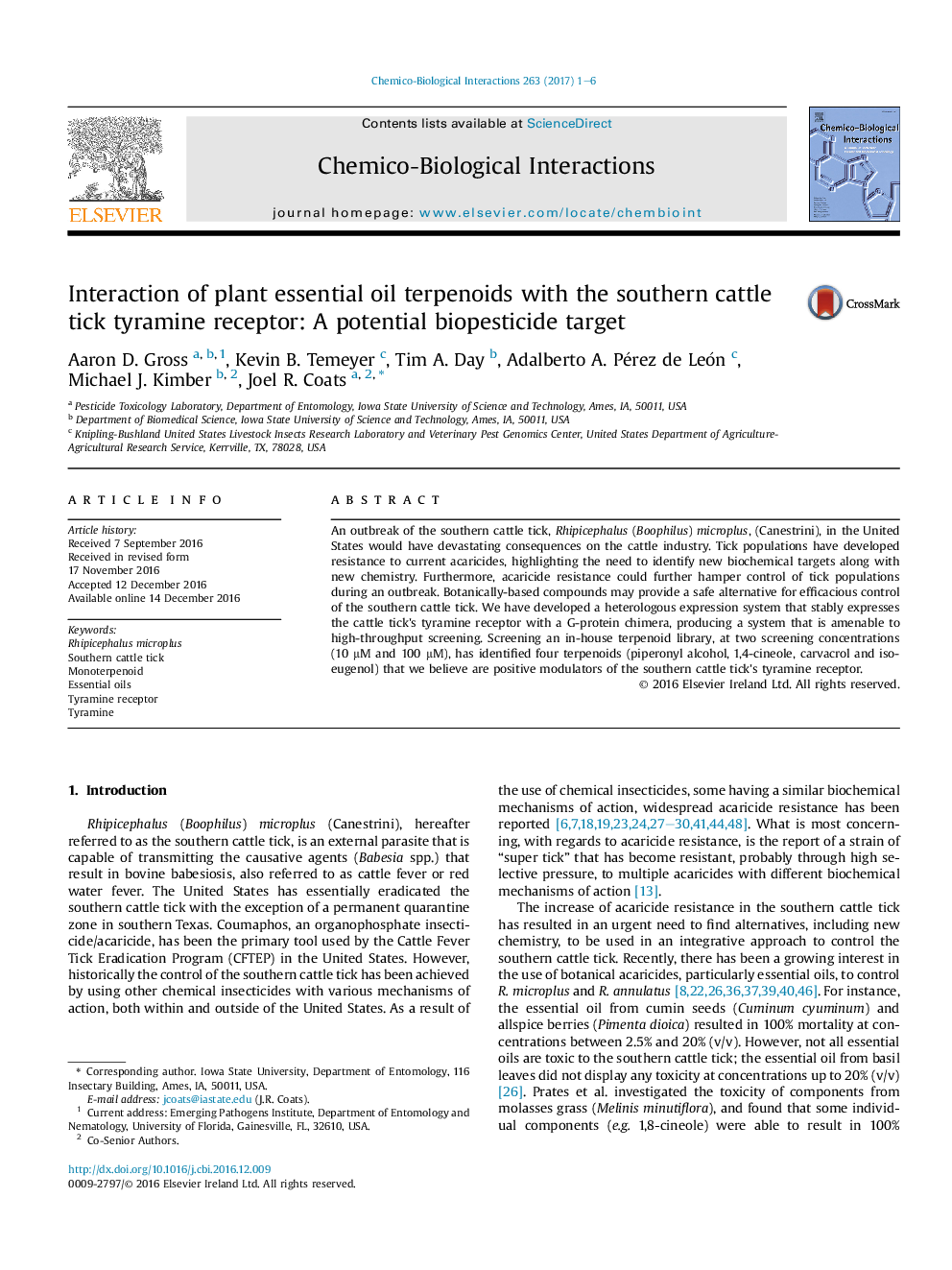| Article ID | Journal | Published Year | Pages | File Type |
|---|---|---|---|---|
| 5559456 | Chemico-Biological Interactions | 2017 | 6 Pages |
•The calcium pathway is activated by using a Gαqi(5) G-protein chimera co-expressed with the tyramine receptor.•The bicyclic monoterpenoid pulegone at 10 μM has an agonistic effect on the tyramine receptor.•Several monoterpenoids and related aromatic compounds enhance the response of tyramine at the tyramine receptor.
An outbreak of the southern cattle tick, Rhipicephalus (Boophilus) microplus, (Canestrini), in the United States would have devastating consequences on the cattle industry. Tick populations have developed resistance to current acaricides, highlighting the need to identify new biochemical targets along with new chemistry. Furthermore, acaricide resistance could further hamper control of tick populations during an outbreak. Botanically-based compounds may provide a safe alternative for efficacious control of the southern cattle tick. We have developed a heterologous expression system that stably expresses the cattle tick's tyramine receptor with a G-protein chimera, producing a system that is amenable to high-throughput screening. Screening an in-house terpenoid library, at two screening concentrations (10 μM and 100 μM), has identified four terpenoids (piperonyl alcohol, 1,4-cineole, carvacrol and isoeugenol) that we believe are positive modulators of the southern cattle tick's tyramine receptor.
Graphical abstractFigure optionsDownload full-size imageDownload high-quality image (84 K)Download as PowerPoint slide
